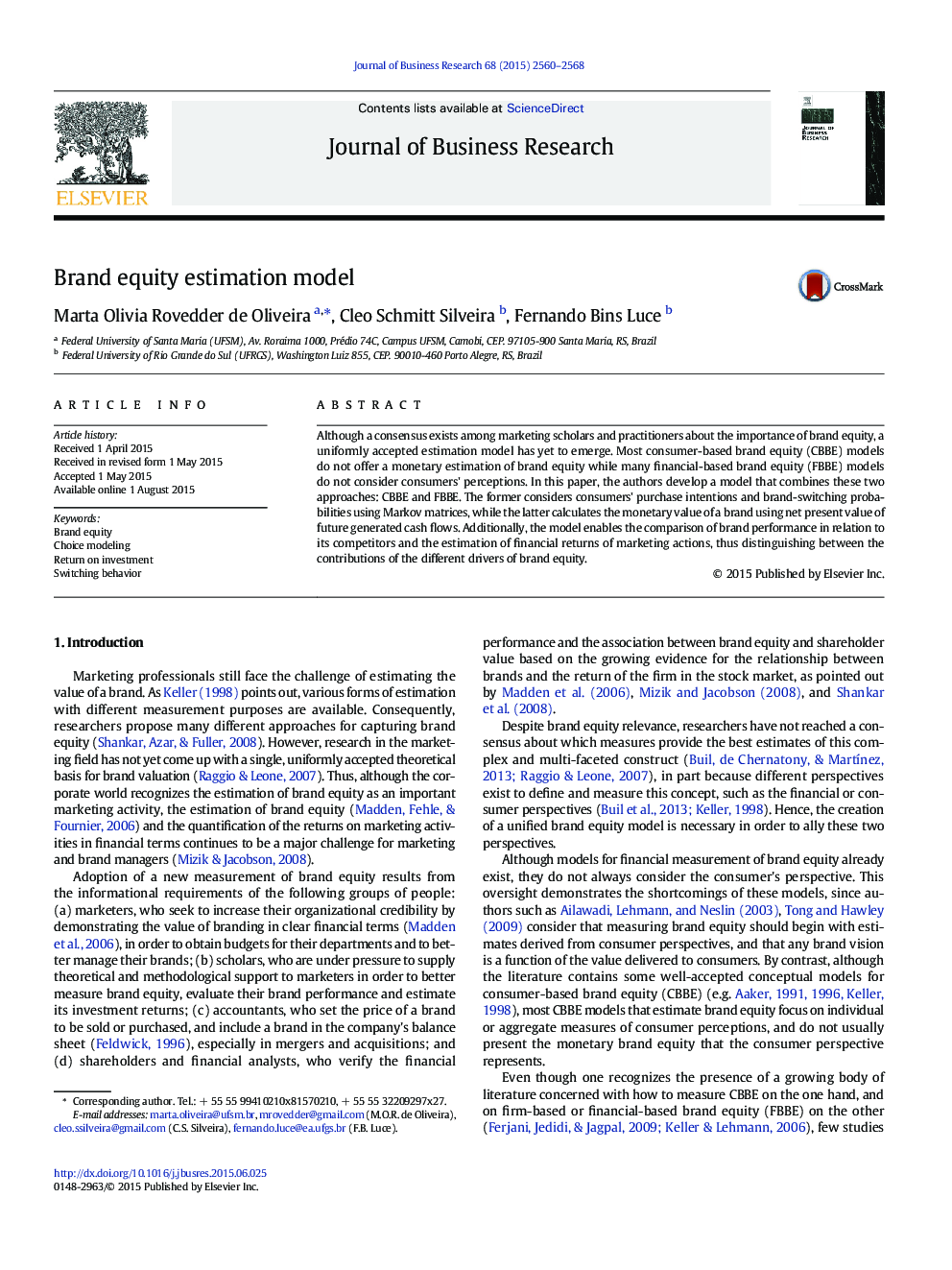| Article ID | Journal | Published Year | Pages | File Type |
|---|---|---|---|---|
| 1017051 | Journal of Business Research | 2015 | 9 Pages |
Although a consensus exists among marketing scholars and practitioners about the importance of brand equity, a uniformly accepted estimation model has yet to emerge. Most consumer-based brand equity (CBBE) models do not offer a monetary estimation of brand equity while many financial-based brand equity (FBBE) models do not consider consumers' perceptions. In this paper, the authors develop a model that combines these two approaches: CBBE and FBBE. The former considers consumers' purchase intentions and brand-switching probabilities using Markov matrices, while the latter calculates the monetary value of a brand using net present value of future generated cash flows. Additionally, the model enables the comparison of brand performance in relation to its competitors and the estimation of financial returns of marketing actions, thus distinguishing between the contributions of the different drivers of brand equity.
